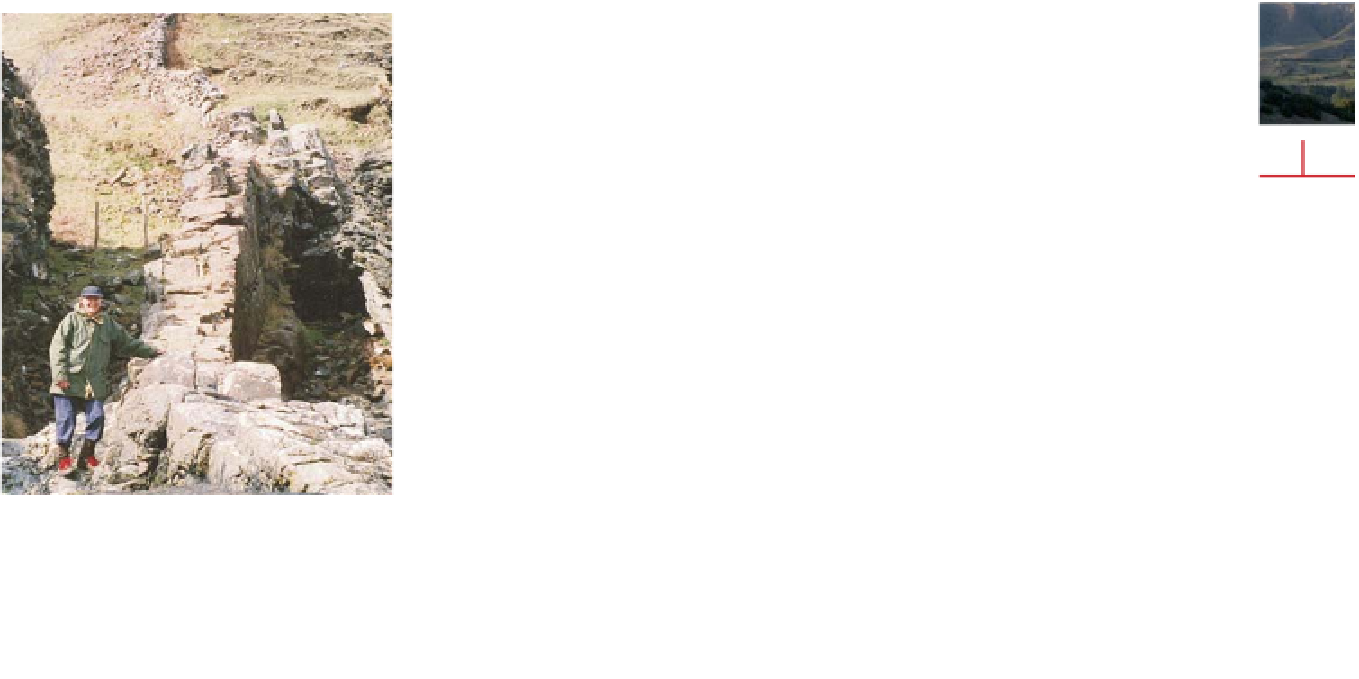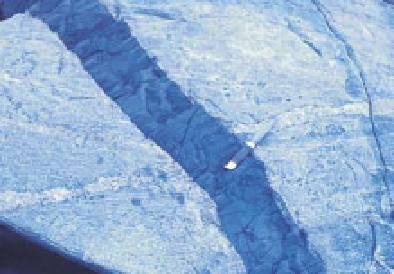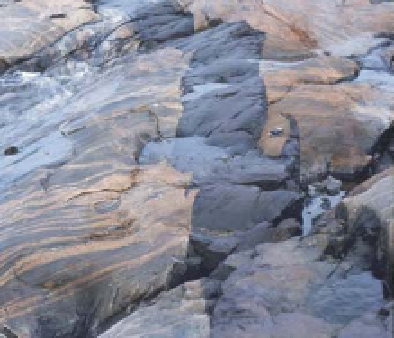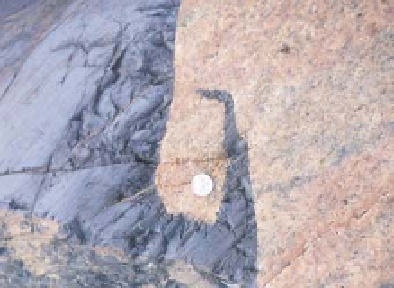Geology Reference
In-Depth Information
to some extent forcefully intruded.
However, it is equally clear that force-
ful emplacement plays only a partial
role in the emplacement mechanism,
and that space must have been made
for these bodies in some other way. In
the 1950s and '60s it was thought by
many geologists that metamorphosed
host rocks of suitable composition
could be converted into granite (a
process known as 'granitisation') and
that this could solve the space problem.
However, this process subsequently
became discredited, and most granitic
bodies are now believed to be genu-
inely igneous in origin, although minor
transformation of host rocks may have
taken place around their margins.
It is considered that batholiths are
most likely to have been emplaced by a
process similar to that responsible for
laccolith intrusion, though on a much
larger scale, space being found by the
relative displacement of either the
sides or the roofs of the bodies. Thus
smaller, perhaps dyke-like, or pipe-like,
bodies of magma may intrude upwards
to feed larger bodies at mid- to upper
crustal levels, where the host rocks
can more easily be displaced upwards
or sideways to make the necessary
space. Some granite bodies are known
to have invaded major strike-slip fault
zones or shear zones, where gaps can
be easily created at extensional bends,
as explained in Chapter 5 (
see
Figure
5.8). Those batholiths that have been
investigated in detail have invariably
been shown to be composed of many
separate plutons emplaced over a long
period of time. The mode of emplace-
ment of such bodies, which will now
be discussed, is thus key to under-
standing the formation of batholiths.
A
D
8
bayonet
structure
68
69
Figure 8.3
A.
Dykes are often less easily eroded
than their host rocks and stand out like walls,
as in this example from Ardnamurchan, western
Scotland.
B.
Offset markers, such as this granite
vein, indicate the direction of extension of the
host rock to allow emplacement of the dyke.
C.
The margins of this dyke show both a step and a
bayonet structure.
D.
Close-up view of the dyke
in C showing the bayonet structure (see Figure
8.2E).
B
Batholiths, stocks and diapirs
How large
batholiths
, typically formed
of granite, are emplaced into the crust
(the so-called '
space problem
') has
been the subject of considerable specu-
lation and debate in the past. Some of
these bodies are extremely large - the
Coast Range batholith of British Colum-
bia, Canada, is around 1,000 km long
and up to 150 km across. Batholiths
usually appear to be steep-sided, with
generally discordant relationships to
the host rocks, and are a typical feature
of continental margins above subduc-
tion zones. Formerly thought to extend
to great depth in the crust, some have
now been shown to have a relatively
shallow base, perhaps only around
10 km deep; however, because they
are deeply eroded, their original thick-
ness may have been much greater.
From their relationships to their host
rocks, which are typically deformed
by them, it is clear that batholiths are
offs et
C
bayonet
step
B
of which consists of relatively dense
basic and ultrabasic rock, which makes
the suggested mechanism plausible.






Search WWH ::

Custom Search